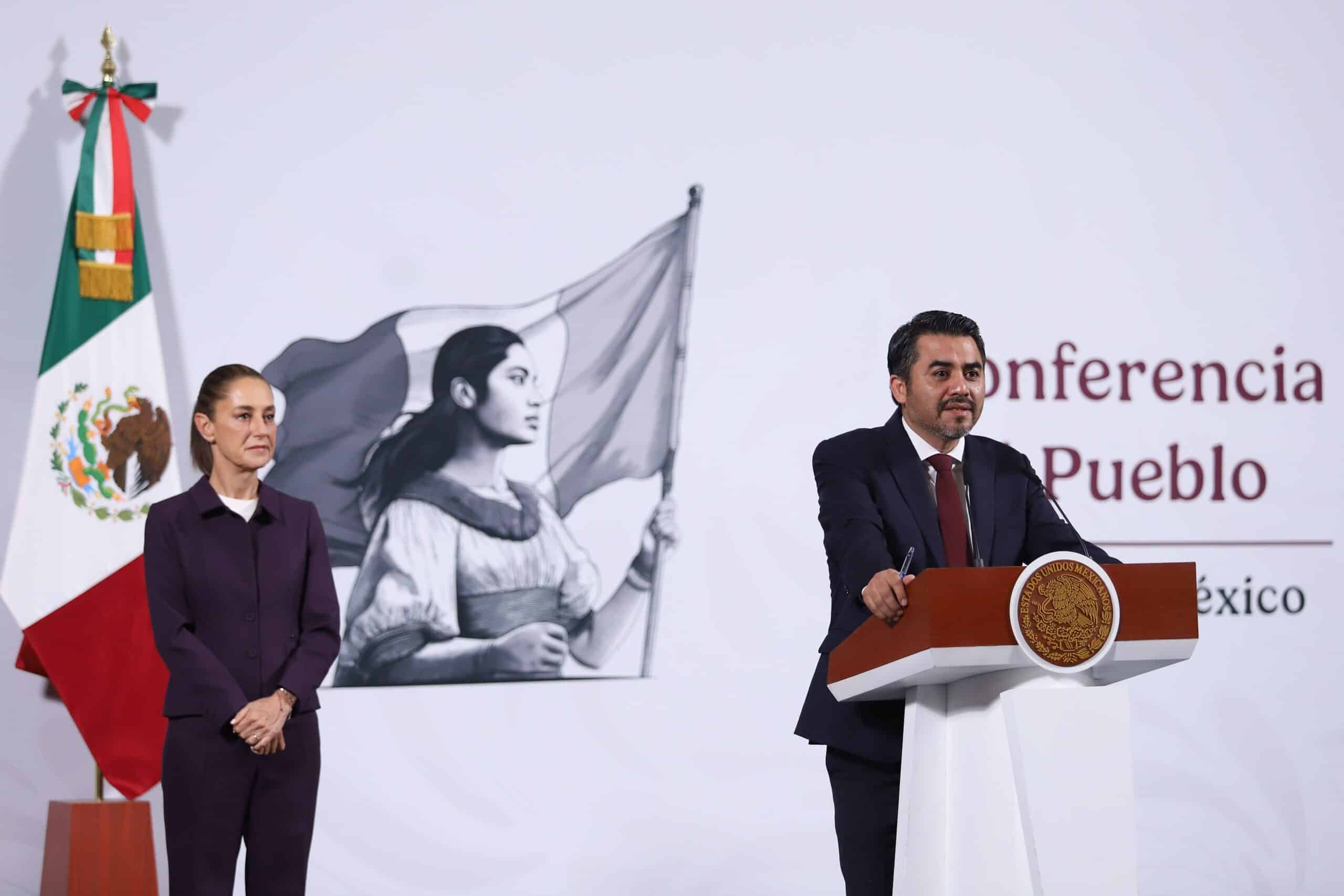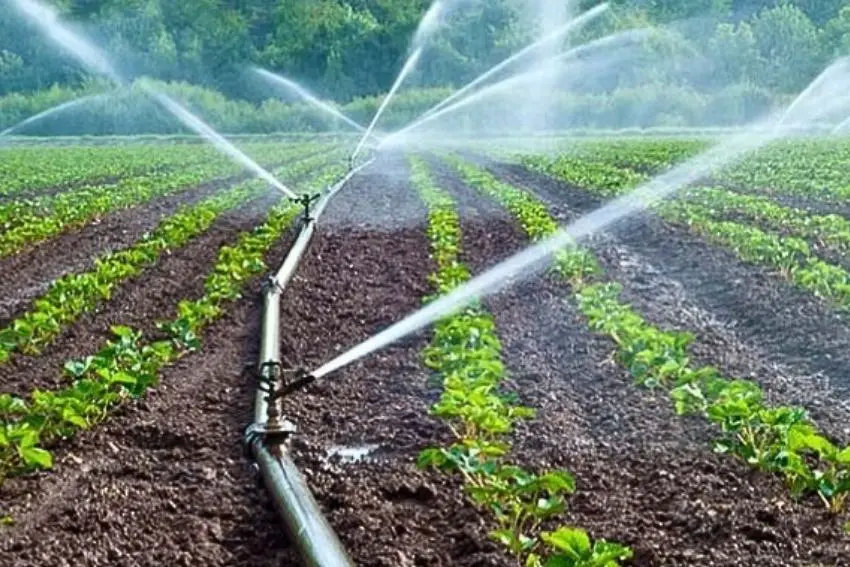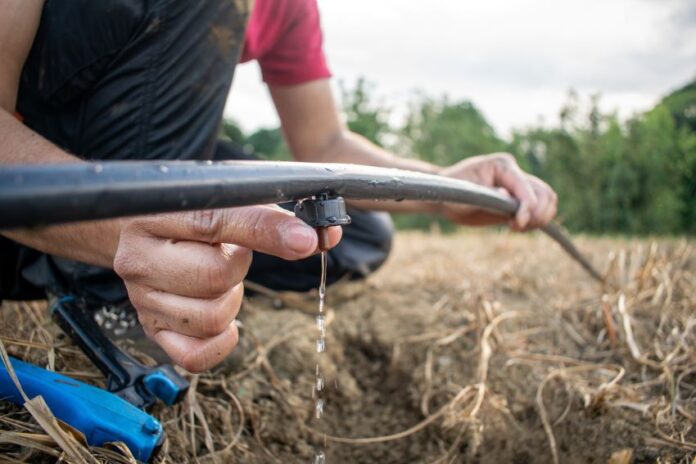As drought deepens in Mexico, the National Water Commission on Thursday presented a plan that officials hope will save 2.8 billion cubic meters of water across the country.
Water commission (Conagua) officials on Thursday said the updated National Irrigation Modernization Program aims to upgrade systems that will affect 200,000 hectares of irrigable land in Mexico, reducing agricultural water waste.

During her morning press conference, President Claudia Sheinbaum said her administration plans to invest 51.8 billion pesos (US $2.5 billion) during her six-year term to modernize the nation’s irrigation systems. She said the system overhaul will increase productivity.
“[The hydro-agriculture sector] will see greater production with less water,” she said, “freeing up 2.8 billion cubic meters [of water] … for human consumption.”
Hydro-agriculture is akin to small-scale irrigated agriculture, in contrast to hydraulic agriculture which is large-scale farming which involves the use of fluid power to operate machinery, control implements, and perform various tasks on the farm.
Sheinbaum said the transition is not as simple as installing new technology and watching it work. The system overhaul requires a comprehensive organizational plan at the individual farm level and at the federal irrigation district level.
The government hopes more efficient hydro-agriculture will resolve the perennial shortage of water for human consumption, a problem that resulted in chatter about a potential “Day Zero” in Mexico City last year.
Calling the program unprecedented, Efraín Morales, director of the water commission (Conagua), said it is of utmost importance because 76% of the nation’s water is utilized in agriculture.
“The modernization program is not just about resolving existing problems,” Morales said, referring to aging canals and leaky irrigation infrastructure. “The president has instructed us to look for alternatives that allow for more efficient use of water in productive processes as well as in matters of social consumption.”
Morales reiterated Sheinbaum’s goal of producing more food with less water so as to increase drinking water availability. He added that some of the recovered water would be used to recharge the nation’s aquifers.

He said the long-term goal is to find and implement solutions that will make Mexico’s countryside sustainable.
By the end of this year, Conagua hopes to repair or replace 315 kilometers of irrigation canals, potentially reducing water use by 25%, Morales said. Another 43 kilometers of canals will be replaced with pipes, protecting the water from evaporation and reducing water loss by 40%.
The program will also pay for modern floodgates — both mechanized and manual — to make distribution and storage more efficient. Telemetry systems will also be installed in some locations to measure water usage and distribution.
Beyond simply repairing canals to prevent leaks, the program focuses on teaching responsible water use. Among the activities Conagua is emphasizing is working with farmers to avoid over-irrigating their fields
Conagua will also even out farmlands, with plans to level 10,500 hectares this year alone. This process will allow for more uniform irrigation while limiting puddling and run-off.
The program will also work to install aspersion and microaspersion irrigation systems to better control the amount of water and delivery timing.
Aarón Mastache, assistant director of Conagua’s hydro-agriculture infrastructure division, explained that the program will primarily focus on 13 of Mexico’s 86 irrigation districts. These targeted districts are located near urban centers that are experiencing water shortfalls, he said.
So far 10 irrigation districts — in Sinaloa, Morelos, Aguascalientes, Tamaulipas, Guanajuanto, Coahuila and Durango — have signed up for the program. Two of the remaining districts, both in Chihuahua, are expected to climb aboard next week. Officials in the last district, in Baja California, are negotiating the conditions of its inclusion.
Mastache explained that the program budget will come from three sources: the majority of funds will come from the federal government, but state governments and farmers will also contribute, though he did not specify percentages.
With reports from El Universal and Infobae
